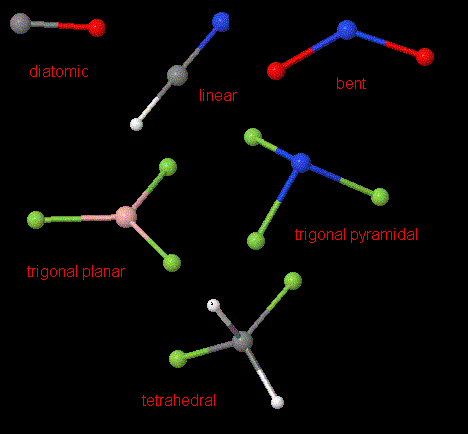 Searching the database using the "shapes" search option is a great way to have students learn to recognize the basic molecular shapes.
Searching the database using the "shapes" search option is a great way to have students learn to recognize the basic molecular shapes.
There are over 50 shapes to choose from in the full database, so we recommend using the "entry level" data base, which only includes the six basic shapes: diatomic, linear, bent, trigonal planar, trigonal pyramidal, and tetrahedral. We suggest exploring the database yourself first and then possibly picking out some of the structures you especially like to show the class or to ask the students to look at in particular. |

